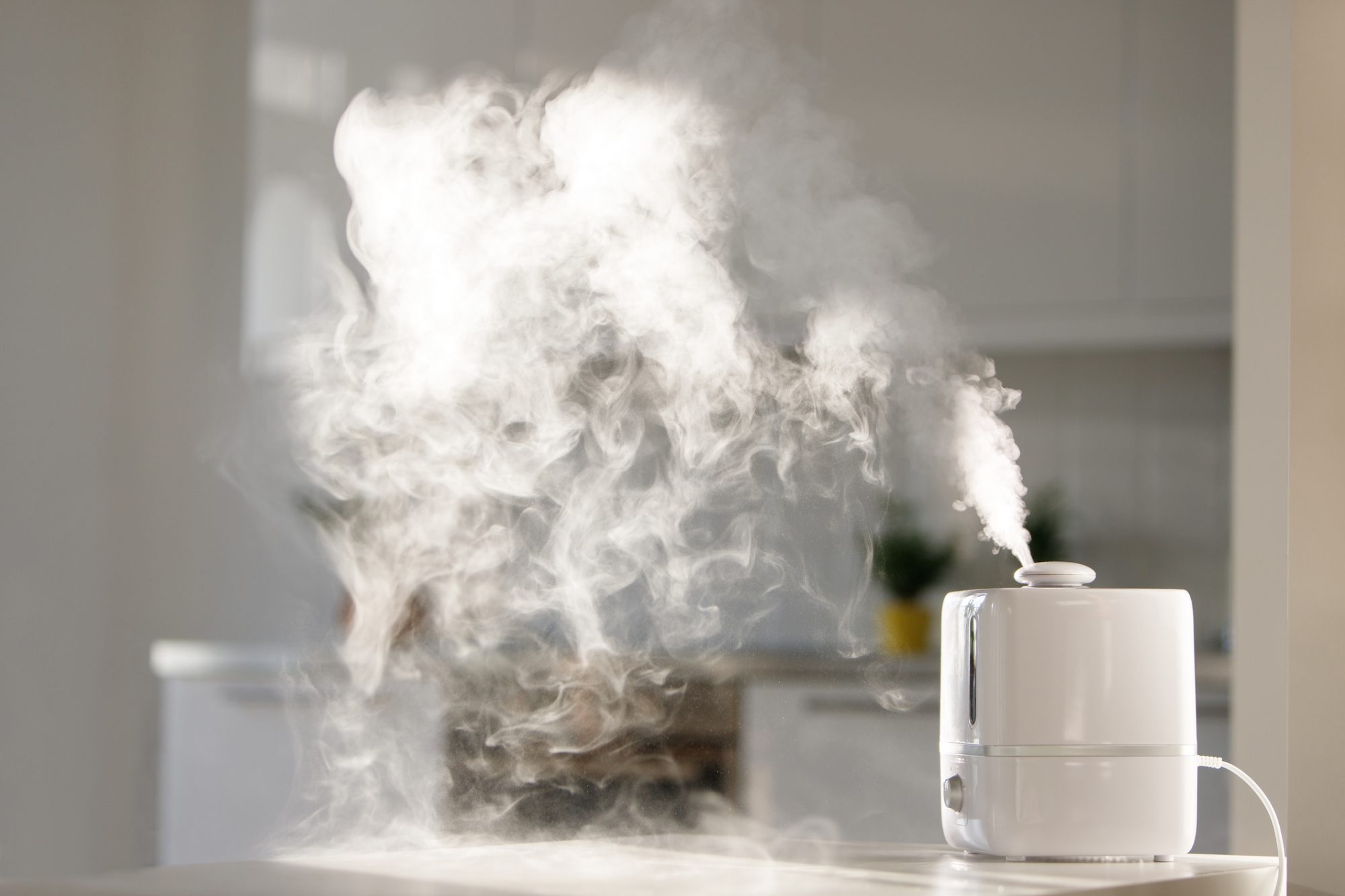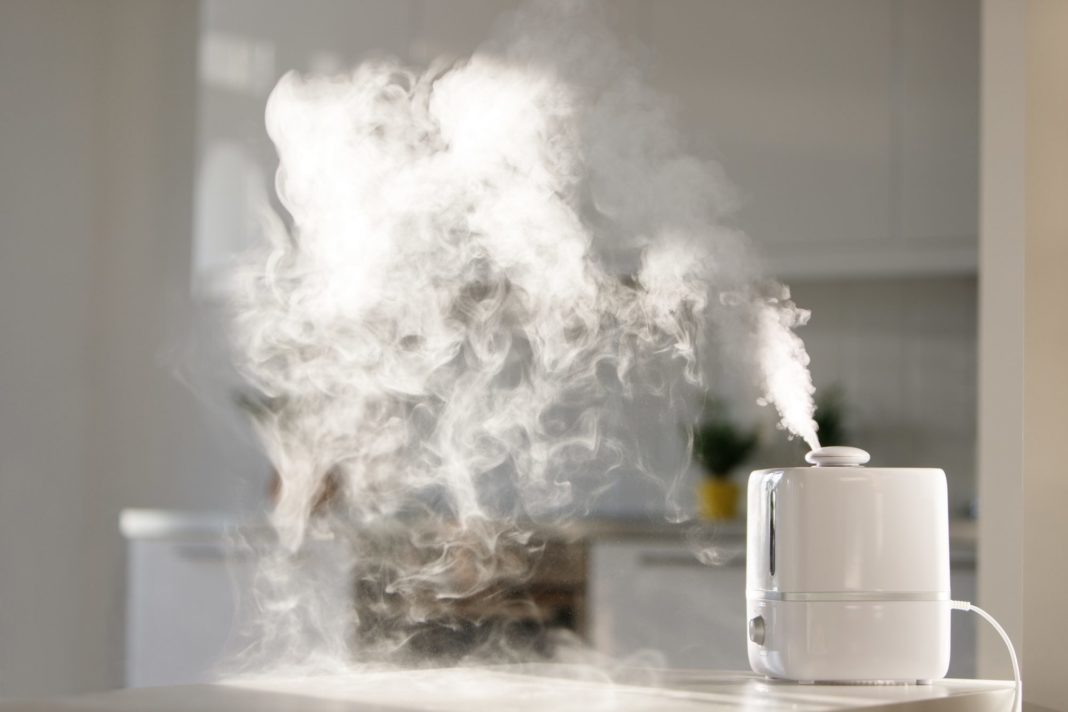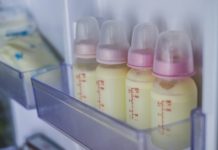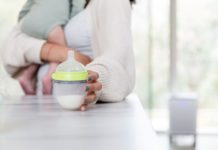
If you have a little one, you know that the onset of winter inevitably leads to dry skin, viruses, and stuffy nasal passages. A humidifier placed safely in your baby's room can be a real game changer when it comes to easing symptoms.
But are humidifiers safe for your baby? Are there any precautions to know about, like how close should a humidifier be to the baby, and what setting should you keep it on? It's smart to be on top of any potential issues, so keep reading for everything you need to know about putting a humidifier in your baby's room.
How Do Humidifiers Help Babies?
Humidifiers work by converting water into steam, and forcing it into the air through a spout. This increases the moisture content of the air, and when that moist air is breathed in through the mouth or nose, it helps alleviate dryness in your airways.
"Humidifiers are helpful in infants' rooms when they have upper respiratory infections or when the air is very dry in the home—usually in the winter," says Jennifer Foersterling, M.D., a Washington University pediatrician at Premier Pediatrics in St. Louis. "The humidified air keeps the nasal passages moist and mucus less sticky." That leads to easier breathing for Baby, which of course helps them sleep much better (always a cause for celebration!).
In addition, humidifiers can ward off dry skin, and they can help keep eczema at bay. And some babies like the white noise that humidifiers give off.
How Should a Humidifier Be Used in Baby’s Room?
If you're thinking about putting a humidifier in your baby's room, the first step should be consulting the owner's manual. Each humidifier works a little differently, so it's best to start smart and know exactly how to operate yours. This is also crucial for avoiding fire hazards. While there's less chance of fire with cool mist humidifiers over warm mist varieties, any time water and electrical cords are in proximity to one another, caution is advised.
Secondly, consider talking to your child's doctor about using a humidifier. They'll be able to confirm that it's a good choice, or suggest alternatives that might ease your baby's symptoms. But in general, a humidifier is a safe and effective way to help your infant sleep and breathe better, especially when those wintertime ickies start to rear their ugly heads.
Humidifier Safety Tips for Babies
There's a lot to learn if you're going to use a humidifier in Baby's room. In case your model's instruction manual wasn't overly helpful, we've added some humidifier safety tips to consult before you get started.
Prevent Mold Growth
Because they're constantly moist, humidifiers have been identified as a potential source of mold, which can grow inside the system and then be forced into the air in your baby's room. "The conditions the humidifier can help manage are the same conditions that can be worsened if not properly maintained," explains Erum Ilyas, M.D., MBE, FAAD, a board-certified dermatologist from Philadelphia.
She recommends routine maintenance by taking apart the entire device, cleaning the basin, maintaining filters, and avoiding buildup of mineral residue and mold. In addition, Dr. Ilyas says that distilled water is better than tap water. "Tap water can have more minerals that can deposit or build up on the sides of a humidifier," says Dr. Ilyas. "These minerals can serve as breeding grounds for bacteria and mold to overgrow."
Eliminate Scalding Hazards
There are two types of humidifiers to choose from; cool mist options are superior to warm mist versions when it comes to using them for young children. "Only cool mist humidifiers should be used, as warm mist vaporizers pose a scalding hazard if they accidentally get tipped over or touched," says Dr. Foersterling. The American Academy of Pediatrics (AAP) also recommends the use of cool mist humidifiers for babies.
Prevent Excessive Dampness
Moisture in the air is good, but a damp and overly humid environment isn't what you're aiming for. These conditions can quickly lead to growth of unwanted mold and mildew, and can even damage wooden floors and furniture. "While you do want the air to be humidified, it's important to check and make sure the room is not getting too wet," says Dr. Foersterling.
Think Twice About Unnecessary Additives
It may be tempting to use a menthol-scented additive in your child's humidifier in the hopes that it will further loosen those congested airways. But in general, it's not necessary, says Dr. Foersterling. "It's unlikely to be of much additional benefit," she asserts.
How Close Should a Humidifier Be to Baby?
"The best place to put the vaporizer is far enough away that the mist does not land directly on the bed and infant, so at least six feet away," says Dr. Foersterling. It's also critically important to ensure the cord is tucked safely away so your little one can't grab it and pull the machine down. Placing the humidifier on a dresser across the room from your baby's crib, then tucking the cord behind the furniture, can help avoid both of these potential hazards.
As long as it's used correctly and according to safety guidelines and your pediatrician's advice, a humidifier can help you get through the winter without a stuffy-nosed baby. A bit of added moisture in the air may be all they need to drift off to sleep comfortably.


































